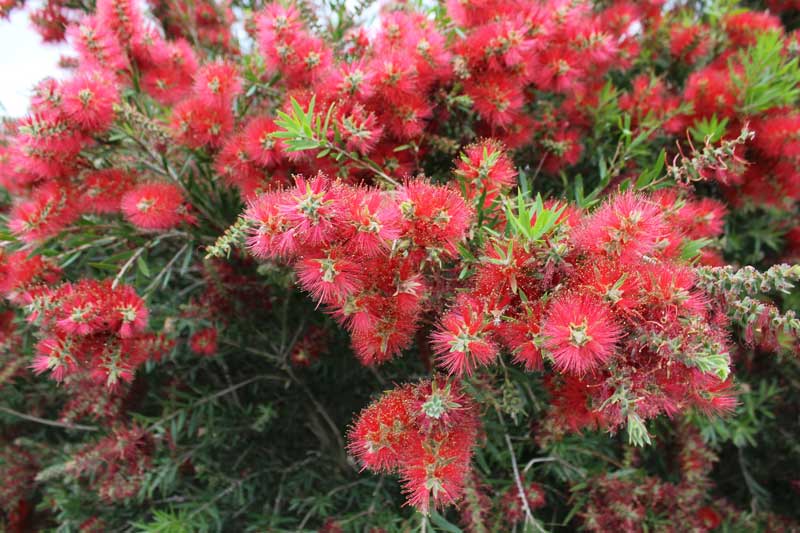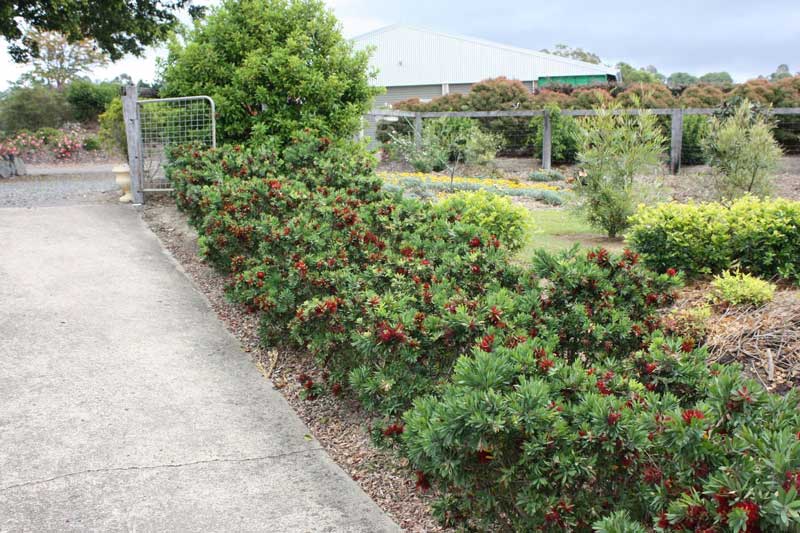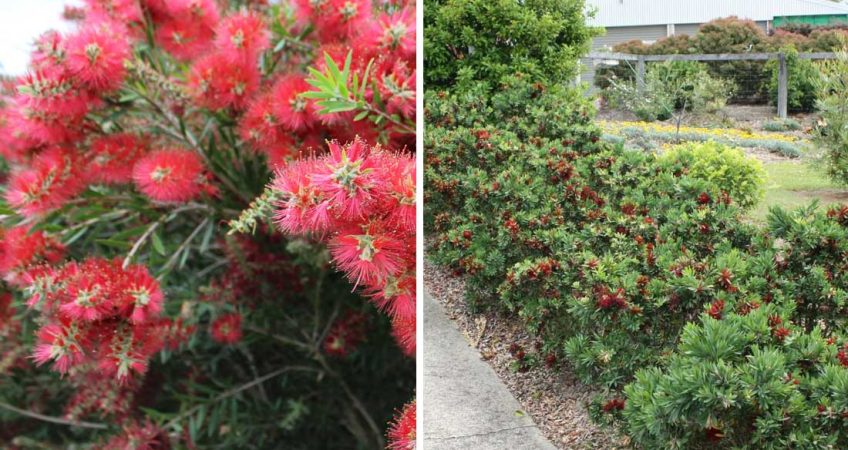Introduction
Among the myriad of Australian flora that carry an exotic allure, the callistemon, also known as the bottlebrush plant, stands out with its distinctive fuzzy flowers.
This guide aims to provide a detailed understanding of callistemons, their ability to withstand New Zealand conditions, and their care requirements.
With its tall, columnar growth habit and abundant flowering, this is Slim™ Callistemon viminalis CV01′ PVR.

Understanding Callistemons: An Australian Native
A. The Unique Characteristics of Callistemons
Callistemons are a visual delight, with their size varying from compact shrubs to towering trees, standing anywhere between 0.5 to 4+ metres tall. Their most defining feature is their cylindrical, brush-like inflorescences, which bear a striking resemblance to a bottle brush.
These flowers burst into a riot of reds, pinks, greens, yellows, pinks or whites during spring, making the plants stand out in any landscape. The leaves of the callistemons are lanceolate and often emit a pleasant aroma when crushed, adding another sensory delight to these plants.
This smell is typical of the Myrtaceae member, and you may recognise similar aromas in eucalypts and lilly pillies.
B. Natural Habitat in Australia
Callistemons are native to Australia, where they have adapted to thrive in a wide range of climates and soil conditions. From the humid coastal regions to the arid interiors, they exhibit remarkable resilience, making them a robust addition to diverse landscapes.
Some callistemons have been known to do well with wet feet, even thriving along river banks in their natural habitat. However, they generally prefer soil that periodically dries out, and many do better in drought than they do in flood.
C. Breeding and Adaptation to New Zealand Conditions
Through careful selection and cross-breeding, cultivars have been developed that can withstand cooler temperatures, resist local diseases, and exhibit prolonged and more spectacular flowering seasons. This has enabled these Australian natives to add their vibrant beauty to New Zealand gardens, where their nectar-rich flowers feed the local biodiversity.
Growing and Caring for Callistemons in New Zealand
A. Selecting the Right Spot and Soil
The positioning of callistemons in your garden can significantly impact their growth and blooming. These plants thrive in well-drained soil – from sandy to loamy to clay, as long as they aren’t waterlogged.
2. This bottlebrush is perfect for short border hedges and as a low-growing shrub. Better John™ Callistemon viminalis ‘LJ1’ PVR.

B. Sunlight, Water, and Nutrient Requirements
Callistemons love to bask in full sunlight, although they can also tolerate partially shaded areas. Their watering needs are minimal once established, but younger plants will benefit from regular watering during dry spells.
If mature plants receive periodic deep watering once the soil has dried, their appearance can be much more impressive, with more vibrant leaves, faster growth, and more prolific flowering.
Despite being adapted to nutrient-poor soils in their native Australia, a slow-release fertiliser (like compost or manure) applied in early spring can give them a significant boost, helping promote that vigorous growth and abundant flowering.
C. Pruning for Health and Aesthetics
Thoughtful pruning involves removing dead or diseased wood and branches that cross or compete with each other. Pruning the very tips of the plant encourages a bushier growth habit. Many callistemon varieties respond well to hedge pruning.
Alternatively, a hard prune back every few years encourages fresh, tender growth and maintains the plant’s natural shape. It also means you only need to prune once every few years.
Conclusion
Callistemons, with their vibrant colours and unique forms, can add an exotic touch to New Zealand gardens. By understanding their characteristics, care requirements, and propagation techniques, you can enjoy these Australian natives’ resplendent beauty in your own garden.
They not only enhance the aesthetic appeal of your garden but also contribute to biodiversity, making your gardening efforts worthwhile and rewarding.

